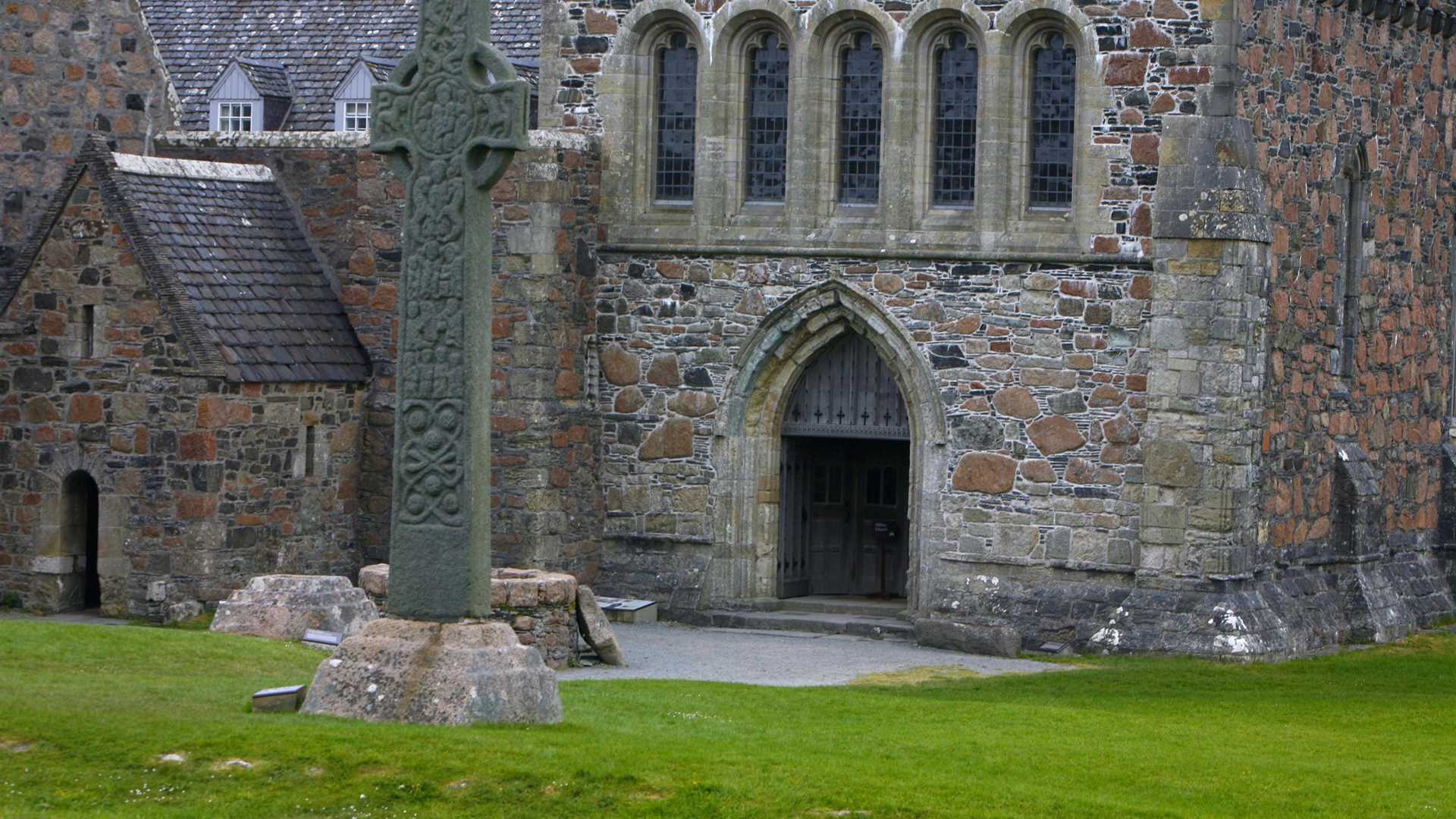We dropped anchor a short distance from our landing spot on Iona Island early this morning. Low-lying grey clouds cleared as we boarded our Zodiacs and made our way ashore. Our principle focus was an exploration of the impressive renovated Benedictine abbey and the ruins of an Augustinian nunnery, both of which were established in the early 13th century. The abbey was built on the site where St. Columba originally founded a simple early Christian monastery in sixth century A.D. Of royal lineage in his native Donegal in Ireland, Columba began studying for a religious life from an early age. Prior to founding Iona in 563 A.D., he had already established a number of monasteries in Ireland, including Kells and Durrow, both of which were to become famous for the illuminated manuscripts that were produced by skilled and learned monks belonging to those particular religious communities. The main reason why St. Columba had established a monastery on Iona was to convert the Picts Celts who controlled the northern region of Scotland. This is an exceptionally special place and the very stones seem to exude serenity and peace.
Guided walking tours of the abbey had been scheduled. At every turn the medieval buildings revealed something to catch the eye and to engage the mind. The main complex and its layout are typical of that period and include church, cloisters, dormitory, chapter house and refectory. Having prospered as a religious community for centuries, the abbey and the nearby Augustinian nunnery fell on hard times with the arrival of the Scottish Reformation in the 1560s and slowly slipped into decline. A suite of romantic ruins, it would not be until 1938, under the guidance and energy of a Rev Dr. George MacLeod, that a program of rebuilding would take place, the fruition of which can be marvelled at today. He founded the Iona Community, which continues the tradition of Christian worship that St. Columba began over 1,400 years ago. Ecumenical services are provided daily in the abbey and countless pilgrims are welcomed here. The site is peppered with interesting features, including the medieval cobbled street known as the “Street of the Dead”. Here, bodies were carried from the abbey to the Royal Burial Ground, where Macbeth is reputed to have been interred.
We spent the afternoon exploring the small island of Staffa which is under the care of the National Trust for Scotland. Lying due north of Iona, this is a geological gem. The entire island consists of countless columnar basalt pillars, which are the result of the cooling of magma outpourings related to the formation of the Atlantic Ocean, some 65 million years ago.
Once ashore we made our way in small groups to see the puffin colony for which the island is renowned. These comical looking birds did not fail to impress and amuse. Seeing them take off from the entrances to their burrows, whirling around in the air above our heads and landing within touching distance from where we were sitting was a special experience. Zodiac cruises provided spectacular vistas of Staffa’s coastline. Incessant pounding by waves has eroded a large hollow known as Fingal’s Cave. This natural feature was the inspiration for Felix Mendelssohn’s internationally famed composition, Hebrides Overture. Rafts of puffins rose and fell on the swells, providing yet another wonderful opportunity for close-up photos.







